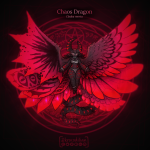
It is not particularly surprising, really, that most magi-herpetological studies have been done by Parselmouths. When dealing with snakes, particularly venomous ones, and particularly magical venomous ones, being able to talk to, and reason with the snake is often the difference between life and death.
While some serpents, such as Ouroboros snakes, are generally harmless, there are some, such as the Dipsa – which are so venomous, and the bites of which are so tiny and fleeting, that one may not notice they have been struck – and the Alicante which is known for its often parasitic preference in living. What is worse the magical nature of the venom of many magical snakes means they cannot easily be countered – Uraeus venom is a spectacular example of this.
As such this volume contains not only the findings of assorted wixes, but also excerpts of translated conversations with each of the magical snakes discussed in this volume.
— Excerpt from Magical Snakes of the World by Vesta Scale.
(Image sent in by jackandhoney1.
I hate that I have to include this but PLEASE DO NOT DELETE THE IMAGE SOURCE OR MY CAPTION.)

























